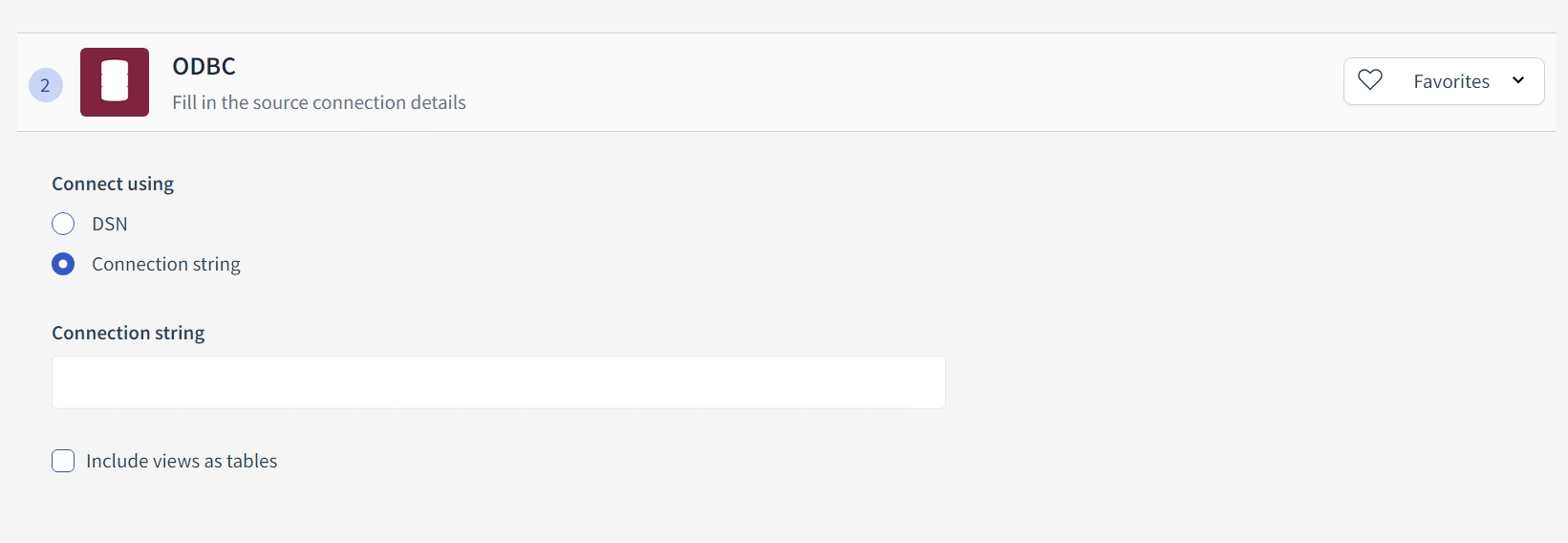ODBC

Connection Details
Connect using
DSN
Select this option if you have a pre-configured DSN for Databricks. DSNs are a convenient way to store connection information in a named location and can be easily managed within your operating system.
Connection string
Choose this if you prefer to directly enter a full connection string. This string includes all necessary details such as host, port, and credentials.
Connection string
Provide the full connection string which contains the driver, server, and other necessary details for establishing a connection. It should be formatted as per the requirements of the ODBC driver being used.
Include views as tables
Check this option if you want to treat database views as tables for the migration process. This allows for the inclusion of views in the data migration or transformation steps.
Last updated